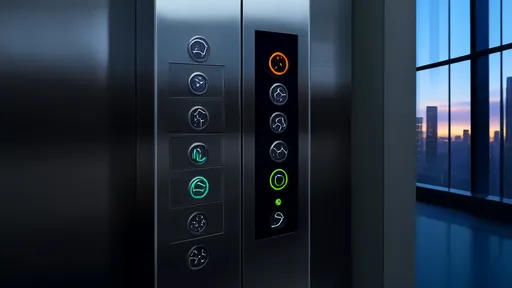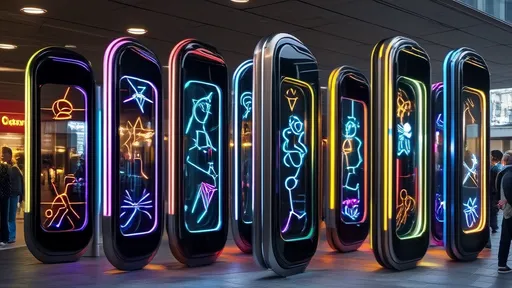In the bustling world of modern urban life, elevators have become an indispensable part of our daily routines. We step in, press a button, and ascend or descend without much thought. Yet, hidden within this mundane interaction lies an unexpected psychological phenomenon: the unconscious influence of elevator buttons on human behavior, often humorously referred to as "Elevator Button Astrology."
This peculiar concept suggests that the way people interact with elevator buttons might reveal subtle personality traits or decision-making patterns, much like how astrology claims to interpret celestial influences. While it lacks scientific backing, the idea has gained traction in pop psychology circles, sparking conversations about human-machine interactions and subconscious behaviors.
The Psychology Behind the Press
Human beings are creatures of habit, and our interactions with everyday objects often follow unconscious patterns. When faced with a panel of elevator buttons, most people don't consciously choose how to press them—they simply act. Some individuals jab at buttons with a single determined finger, others use their thumb, while some might even employ a knuckle or elbow in germ-conscious times. These micro-behaviors might reflect deeper personality tendencies or momentary emotional states.
Observers note that button-pressing styles can vary dramatically. The decisive "stabbber" who hits buttons with conviction might approach life with similar determination. The "hoverer" whose finger wavers before making contact could display more cautious decision-making in other areas. Then there's the "multi-presser" who hits the same button repeatedly, as if more pushes will summon the elevator faster—a modern manifestation of magical thinking.
Cultural Variations in Elevator Interactions
Cross-cultural studies of elevator behavior reveal fascinating differences. In some cultures, people tend to press buttons lightly and patiently, while in others, more forceful interactions are common. These variations might reflect broader cultural attitudes toward time, personal space, or technology. The "button-masher" phenomenon appears more frequently in fast-paced urban environments where time pressure feels more acute.
Interestingly, the design of elevator panels themselves influences these interactions. Older elevators with mechanical buttons require different pressure than modern touch-sensitive panels. Some new elevators feature braille or auditory feedback, creating yet another layer of interaction complexity. The physical experience of pressing—whether one feels resistance or gets immediate digital acknowledgment—subtly shapes the user's experience and subsequent behavior.
The Myth of the "Close Door" Button
No discussion of elevator button psychology would be complete without addressing the great urban legend: the placebo effect of the "close door" button. Studies have shown that in many elevators, these buttons are either disconnected or programmed to ignore presses until a set time has elapsed. Yet people continue to push them fervently, demonstrating how strongly we believe in our ability to control our environment, even when evidence suggests otherwise.
This phenomenon mirrors superstitious behaviors observed in other contexts, from lucky socks worn by athletes to ritualized pre-game routines. The elevator becomes a microcosm for examining how humans create narratives of control in an increasingly automated world. Our insistence on pressing non-functional buttons reveals an almost touching faith in human agency amidst technological systems that operate on their own schedules.
Social Dynamics in the Elevator Space
Elevator rides create unique social situations where strangers stand in unusually close proximity while pretending not to notice each other. Button-pressing behaviors become part of this complex social dance. The person who presses buttons for others might be seen as helpful or controlling. Those who rush to select their floor before others can do it for them might value independence or feel uncomfortable with unsolicited assistance.
Group dynamics play out in interesting ways. In crowded elevators, people often delegate button-pressing to the person nearest the panel. Social hierarchies become momentarily visible—assistants often press buttons for executives, younger people for elders in some cultures. These fleeting interactions, lasting mere seconds, nonetheless reveal deeply ingrained social codes and power structures.
Technological Evolution and Changing Behaviors
As elevator technology advances with voice activation, smartphone integration, and destination dispatch systems, these unconscious interactions may disappear entirely. Future generations might find the idea of manually pressing buttons as quaint as using a rotary phone. This impending shift makes studying current behaviors more urgent for psychologists interested in human-technology interaction.
The move toward automation raises questions about what we lose when these small moments of physical interaction vanish. While pressing buttons seems trivial, these micro-interactions represent some of our last tangible connections to the mechanical world in an increasingly digital existence. They provide momentary opportunities for decision-making in environments where most choices have been algorithmically predetermined.
Elevator Buttons as Stress Indicators
Some workplace psychologists suggest monitoring elevator button behavior as a novel metric for office stress levels. Aggressive or frantic button pressing might correlate with workplace anxiety or time pressure. Conversely, calm, deliberate presses could indicate a more relaxed environment. While not scientifically validated, this approach highlights how mundane behaviors can serve as windows into broader psychological states.
Hospitals and other high-stress environments might benefit from such observations. The way medical staff interact with elevator buttons during emergencies versus routine moments could provide insights into stress management and workflow efficiency. These small behaviors, usually beneath notice, might offer valuable data about organizational dynamics and individual coping mechanisms.
The Future of Unconscious Design Interactions
Understanding these unconscious interactions has implications beyond elevators. As interface designers become more sophisticated, they're incorporating psychological insights to create more intuitive products. The study of how people actually use objects, rather than how designers intend them to be used, leads to better human-centered design.
Perhaps future elevators will adapt to individual users' pressing styles, offering different feedback based on behavior patterns. Machine learning algorithms could detect stress from interaction patterns and adjust lighting or music to create calming environments. The humble elevator button might evolve into a sophisticated interface for monitoring and responding to human emotional states.
While "Elevator Button Astrology" remains more whimsy than science, it serves as a reminder to pay attention to the countless unconscious interactions that fill our days. These micro-behaviors, easily overlooked, form the texture of our relationship with technology and with each other. In an age of smart devices and AI assistants, sometimes the most revealing moments come not from grand technological leaps, but from observing how people press a simple button.

By /Jul 28, 2025

By /Jul 28, 2025

By /Jul 28, 2025

By /Jul 28, 2025

By /Jul 28, 2025

By /Jul 28, 2025

By /Jul 28, 2025

By /Jul 28, 2025

By /Jul 28, 2025

By /Jul 28, 2025

By /Jul 28, 2025

By /Jul 28, 2025

By /Jul 28, 2025

By /Jul 28, 2025

By /Jul 28, 2025

By /Jul 28, 2025

By /Jul 28, 2025

By /Jul 28, 2025